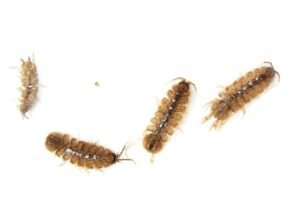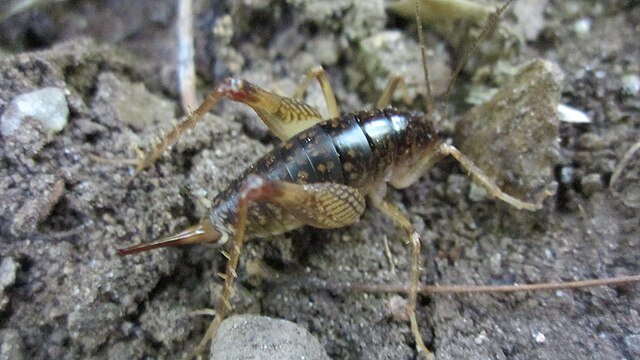Sowbugs: Identification, Biology, and Effective Control Methods
 Sowbugs are common pests found in homes, gardens, and farms all over the world. Many people mistake them for insects, but they are actually crustaceans, more closely related to shrimp and crabs. Because they need moisture to survive, they are most active in damp, dark areas.
Sowbugs are common pests found in homes, gardens, and farms all over the world. Many people mistake them for insects, but they are actually crustaceans, more closely related to shrimp and crabs. Because they need moisture to survive, they are most active in damp, dark areas.
This guide explains everything you need to know about sowbugs: how to recognize them, whether they are harmful, and the best ways to control them both indoors and outdoors. It also covers natural remedies, chemical options, and prevention tips that work in different parts of the world.
What Are Sowbugs?
Sowbugs belong to a group of land-dwelling crustaceans called isopods. Their scientific family is Oniscidea. They have flat, oval-shaped bodies with several overlapping plates that make them look armored. Adults are usually 6–15 mm long, gray to brown in color, with two tail-like appendages at the back.
Unlike pillbugs (also called roly-polies), sowbugs cannot roll into a ball. This is an easy way to tell them apart.
Sowbugs breathe through gill-like structures, which means they must stay in moist environments to survive. This is why you almost never find them far from damp soil, mulch, or water sources.
Where Do Sowbugs Live?
Sowbugs are usually found outdoors but may wander indoors when conditions outside are too wet or too dry. Their favorite hiding spots include:
Under rocks, logs, or boards
In compost piles, leaf litter, and mulch
Around foundations, basements, and crawl spaces
In bathrooms or kitchens with moisture problems
In gardens, they play a role in breaking down organic matter, turning it into nutrients for plants. However, when their numbers get too high, they may start feeding on tender roots and seedlings.
Sowbugs vs. Pillbugs
Many people confuse sowbugs with pillbugs. Here’s the key difference:
Sowbugs – Have two small tail-like appendages, cannot roll into a ball.
Pillbugs (Armadillidium spp.) – Can curl into a tight ball when threatened, no tail appendages.
Both are harmless to humans, but knowing which one you have helps you understand their behavior.
Are Sowbugs Dangerous?
Sowbugs do not bite, sting, or carry diseases. They are not harmful to people, pets, or structures. The real problem is their presence indoors, which can be unpleasant, and the damage they sometimes cause in gardens.
In large numbers, they may chew on:
Seedlings and sprouts
Soft fruits like strawberries
Tender plant roots
This makes them occasional garden pests, especially in heavily mulched or overwatered areas.
Sowbugs in the Garden: Helpful or Harmful?
In small populations, sowbugs are beneficial. They recycle organic material and improve soil quality. But if you see hundreds of them under every pot and rock, they can quickly become destructive.
Gardeners in the USA, Canada, Australia, and southern Europe often report that sowbugs attack young vegetables, especially when the weather is damp.
The balance is simple:
A few sowbugs = good for soil.
Too many sowbugs = bad for seedlings.
How to Get Rid of Sowbugs Indoors
Since sowbugs need high humidity, they usually cannot survive long inside homes. Still, they may appear in basements, bathrooms, or laundry rooms.
Steps to manage them:
Reduce moisture indoors – Fix leaks, use dehumidifiers, and improve ventilation.
Seal entry points – Block cracks, gaps, and foundation holes where they sneak in.
Remove food sources – Keep basements clean and avoid leaving damp cardboard or wood.
Physical removal – Sweep or vacuum them when you see them.
If you find many sowbugs indoors, it usually means the outside environment is too wet and driving them in.
Outdoor Control of Sowbugs
Controlling sowbugs outdoors requires changing the conditions that favor them.
Reduce mulch and leaf litter – Do not pile mulch thicker than 2–3 inches.
Avoid overwatering – Let the topsoil dry out between waterings.
Move woodpiles and stones – Keep them away from house foundations.
Raise plants – Use raised beds or pots to protect seedlings.
Encourage natural predators – Ground beetles, centipedes, and some spiders eat sowbugs.
Natural and Homemade Control Methods
Many homeowners prefer non-chemical solutions first. Popular methods include:
Potato traps – Place a hollowed-out potato half on the soil; sowbugs gather inside overnight.
Beer traps – Sowbugs are attracted to the smell and drown in shallow dishes of beer.
Diatomaceous earth – A natural powder that damages their bodies and dries them out.
Cardboard shelters – Damp cardboard attracts sowbugs; dispose of it daily.
These methods work best when combined with moisture reduction.
Chemical Control of Sowbugs
In severe infestations, chemical treatments may be considered. These include:
Residual sprays around building foundations
Granular baits in gardens and landscaped areas
Important: Only use pesticides labeled for sowbug control, and always follow local regulations. Overuse of chemicals can harm beneficial insects and pollute soil and water.
Q&A
How to get rid of sowbugs naturally?
Use potato traps, reduce mulch, and keep the soil drier.
Why do sowbugs come inside my house?
They are escaping overly wet or dry outdoor conditions and looking for moisture.
Do sowbugs bite?
No, they never bite people or pets.
Are sowbugs good or bad for the garden?
They are good in small numbers but harmful if they eat seedlings and roots.
Sowbugs Around the World
USA & Canada – Common in basements, crawlspaces, and mulched gardens.
Europe – In Mediterranean climates like Spain, Italy, and Greece, sowbugs thrive in irrigated gardens.
Australia – Gardeners report sowbugs damaging vegetables under thick mulch.
Asia – Found in moist rice paddies and garden soils.
Wherever you live, the solution is the same: manage moisture, clean up organic debris, and use traps when needed.
Prevention Tips
To stop sowbugs from becoming a problem:
Keep mulch and soil dry near the house
Store firewood off the ground
Seal cracks in foundations and walls
Improve drainage around the yard
Ventilate basements and crawlspaces
Prevention is always easier and safer than dealing with a large infestation.
Ιf you found this guide useful, you can explore more in-depth articles on our blog about pest identification, prevention, and safe control methods.
Disclaimer
This article is for informational purposes only. Pest control laws and approved chemicals vary by country. For best results and legal safety, we strongly recommend contacting a licensed pest control professional in your local area. Always make sure that the pest control technician is properly certified or licensed, depending on your country’s regulations. It’s important to confirm that they only use approved products and apply them exactly as instructed on the product label. In most places in Europe, UK, or USA, following label directions is not just best practice—it’s the law.
Author
Nasos Iliopoulos
MSc Agronomist & Certified Pest Control Expert
Scientific Director, Advance Services (Athens, Greece)
Licensed Pest Control Business – Ministry of Rural Development & Food (GR)
References
University of Minnesota Extension – Sowbugs and pillbugs management
University of Kentucky – Sowbugs and Pillbugs
Waltham Pest Services – Sowbugs vs. Pillbugs

